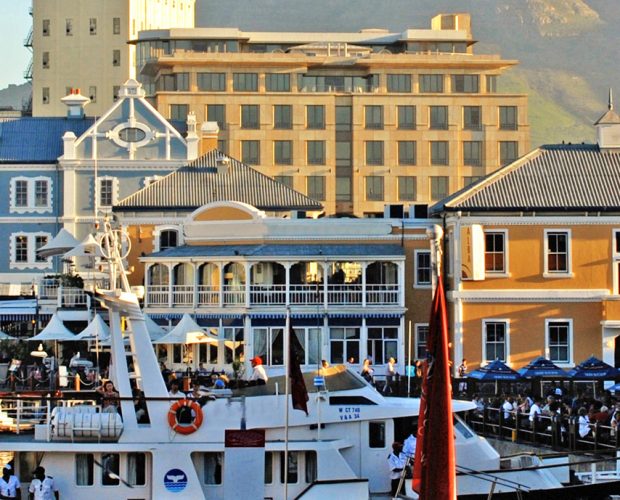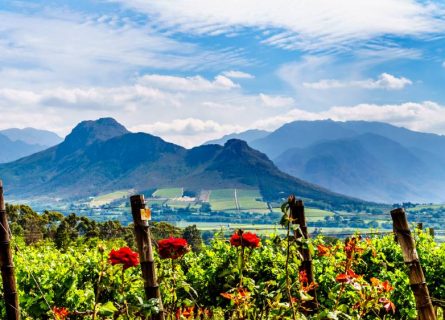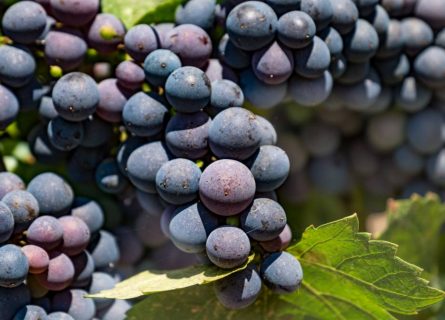Discover Cape Town: a blend of historical richness, cultural diversity, and natural beauty crowned by Table Mountain.
Read more
EXPLORE ALL OUR GUIDES TO SOUTH AFRICA'S WINE REGIONS
Last updated: April 10, 2024
The Franschhoek Valley is undoubtedly the most spectacular and utterly beguiling wine region today. Its history dates back to the 17th century when the area now under vine was farmed by Huguenot settlers fleeing religious persecution. Today, Franschhoek carries that legacy with its French place and family names. Although strictly classed as a separate wine-growing sub-zone, parts of the Franschhoek Valley do fall under the Paarl Ward or regional boundary. The valley is enclosed on three sides by mountains, offering magnificent views of the surrounding vineyards and award-winning restaurants.
Franschhoek can accurately be summed up as a wine tourist’s paradise; visitors are spoilt for choice with a surfeit of leading wine estates, restaurants, and other attractions to visit. Yet, tourist numbers remain blissfully manageable; the beauty of Franschhoek is its slight unanimity compared to Stellenbosch; the region’s fame doesn’t compare, but neither do the tourist numbers or wine prices. Yet, this magnificent region’s wineries are more than geared up for visitors, and almost all of the major wineries come equipped with tasting rooms, guided tours, and opportunities to stock up on delicious wines at cellar-door prices. Indeed, some truly excellent wines are being produced in the region; as the understanding of the terroirs and what varieties work best here increases, so will the quality of the wines continue to rise and rise. And if that is not enough, the Franschhoek Valley offers unrivaled physical beauty in South Africa – what better way to appreciate the view than with a glass of delicious Shiraz in your hand?

The region’s terroir is more varied and complex than first-time visitors might perceive. Generally, it offers warmer growing conditions that are more suitable for robust red variates. However, different sites can vary significantly in average daytime temperatures. For example, the valley gets cooler as you move east and up to higher altitudes, with some excellent Pinot Noir and Sauvignon Blanc of real class and finesse now produced. The soils are a mixture of sandstone and granite, with the former offering good drainage. However, vineyard altitude and aspect are arguably far more important than soil composition – the best sites are found on south-facing slopes, affording those all-important cooler growing conditions.
But even though some excellent whites are now being made in Franschhoek, the reds are world-class. Shiraz – or should that be Syrah? – is always reliably excellent, and the wines offer more cool-climate finesse than their Stellenbosch counterparts. Bordeaux blends are also remarkably successful here, a general indication of the trend to favor red over white varieties in the Western Cape. Cabernet Sauvignon grows with ease tantamount to promiscuity in Franschhoek, offering immense concentration, power, and depth of flavor only rivaled by the best examples in Stellenbosch. The fizz is also pretty excellent; try the wines of Graham Beck to see the mighty potential of Cap Classique.

Although Franschhoek lacks the more celebrated Stellenbosch zone’s glamour further west, some fascinating wines are made in this perhaps less fashionable part of South Africa. Indeed, some of the country’s best wine producers are here, including Boekenhoutskloof, Boshcendal, Chamonix, and Stony Brook. Approximately 1,400 hectares are under vine, situated in a clearly defined valley with the Wemmershoek Mountains to the north and Groot Drakenstein and Franschhoek Mountains to the south. The scenery is also punctuated by the Berg River, which runs north-west towards the region of Paarl.
Chardonnay is a green-skinned grape varietal native to the Burgundy wine region in France and one of the most popular varieties worldwide.
Find out more
Explore the allure of the Semillon grape & its legendary connection to Sauternes. Unveil the history & flavors of this captivating varietal. Cheers!
Find out moreViognier comes from the northern Rhône valley AOC of Condrieu and is where its most famous white wines are produced.
Find out moreDiscover the irresistible allure of Cabernet Sauvignon—a worldwide favorite with robust, dark-bodied flavor. Unleash your wine journey today!
Find out moreMerlot is the most cultivated grape in Bordeaux and closely related to Cabernet Franc
Find out morePinotage is a red grape variety from South Africa, created in 1924 by Professor A.I. Perold. This variety is a cross between Cinsaut and Pinot Noir, but it wasn't widely recognized until the late 1980s, primarily due to the efforts of Beyers Truter. Pinotage gained international acclaim with Kanonkop and is known for its versatility in styles, influenced by growing conditions, vineyard management, and winemaking techniques. Its flavor profile includes plum, cherry, blackberry, and banana, and it responds well to oak barrel aging, developing the potential for smokiness and spiciness.
Syrah is dark-skinned and perhaps the most underrated of the 'noble' red grape varieties.
Find out moreIf you would like us to customize an exclusive luxury tour, contact us and let us know your travel plans. We offer luxury food and wine tours for private groups of a minimum two guests. In addition, all of our private, chauffeured tours are available year-round upon request.

